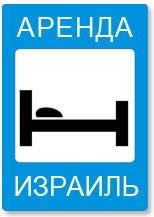|
The effect of spinal anesthesia on the body systems.
Respiratory system: when performing low spinal anesthesia, due to which only the lumbar and sacral segments are blocked, there is no motor block of the abdominal and intercostal muscles involved in the act of breathing. However, for a painless cesarean section operation, the level of anesthesia should reach Th4-Th6, in which the abdominal and partially intercostal muscles are completely blocked. The reserve expiratory volume (ROV) in the presence of a block at the Th5 level is reduced by 35-40%. By the end of pregnancy, there is a decrease in ROV by an average of 20% in comparison with those in non-pregnant women. Functional residual capacity is also reduced by 20%. In the horizontal position, the decrease in these indicators is more pronounced due to the displacement of the diaphragm upward by the displaced pregnant uterus. Clinically, pregnant women with a compromised bronchopulmonary history with spinal anesthesia may develop an ineffective dry cough, an unpleasant feeling of compression in the chest, discomfort when breathing. However, often the insufficiency of the respiratory excursions of the chest is almost completely compensated by the functioning of the diaphragmatic nerves (coming from the C3 -C5 cervical segments), innervating the diaphragm, providing an active process of inspiration. In most cases, a partial motor block of intercostal and a complete block of abdominal muscles clinically have little effect on adequate ventilation of the lungs.
Bladder: blockade of parasympathetic nerve fibers at the level of sacral segments S,-S4 causes atony of the bladder and, as a consequence, urinary retention. The tone of the bladder sphincter increases, which again makes it difficult to empty it. In this regard, all pregnant women whose delivery is carried out by caesarean section, before surgery, mandatory catheterization of the bladder is necessary.
Intestine: sympathetic blockade at the level of TN5 -L3 and, accordingly, the predominance of parasympathetic innervation of the small and large intestines leads to increased peristalsis, which reduces the likelihood of developing intestinal atony in the postoperative period.
Adrenal glands: sympathetic blockade at the TN5 level leads to a decrease in the production of catecholamines by the adrenal medulla, which are stress hormones for surgical trauma. Sensory blockade (interruption of the flow of nociceptive afferent impulses), along with a decrease in the secretion of catecholamines (a decrease in the neuroendocrine response to surgical aggression), provides more pronounced antinociceptive protection compared to that under general anesthesia.
4. Best porn site https://noodlemagazine.com - Watch porn.
|



 +972 3 7631172
+972 3 7631172
 +972 52 5961777
+972 52 5961777
 +380 67 5221402
+380 67 5221402 
 +7 495 662-87-22
+7 495 662-87-22 

